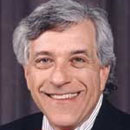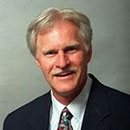The Kid Whisperer: How to prevent, mitigate and stop mean behaviors in the classroom
Published in Lifestyles
Dear Kid Whisperer,
I have a question regarding a situation in my classroom. I have my kids grouped at tables and have stressed to them that this is where we are for the year. I reminded them that sometimes we have to sit by people we aren't best friends with and have to work with people who we don't get along with, but we have to try. Here is the scenario: A student is exhibiting controlling and intimidating behavior. This behavior manifests in various ways, such as manipulation, coercion or even outright physical aggression outside the classroom. What do I need to do to change things for safety, but keep my policies? Things are not happening in the classroom yet, but I am concerned.
Answer: Every student deserves to be safe in their educational environment. This means that schools must be places that have well-trained adults strategically placed within the school building during entry, dismissal, lunch, recess, bathroom breaks and during instructional hallway times. I know because working with schools to do this is what I and my team do for a living.
As a teacher, you have little control over these pieces of the school day unless you have your principal hire us to make sure your common areas are running in the aforementioned way. You can use some bully-proofing sessions with students who are experiencing this kind of behavior in common areas, or on the bus, at the library, or on the street, but these students will not be optimally safe without proper monitoring by trained, loving adults.
Now for what you can control: your classroom. If you use Traditional Discipline, no seating plan will be effective if you have challenging kids. Your seating plan can work, however, when you use Behavioral Leadership strategies and procedures. Here are just a few that can be used to make sure that the very negative behaviors that you are concerned about don’t become functional in your room. By the way, you must be doing a lot right if Kid hasn’t tried his mean antics in your room yet!
Strategic Noticing
Noticing the behaviors that are antithetical to those most-feared mean behaviors is the best way to prevent them. Do it using exactly these words (avoid “I like” and “I see”). This will create an environment where all students know that positive behaviors get them more attention than negative behaviors.
Kid Whisperer: I noticed Kid #21 is helping his friends.
Kid Whisperer: I noticed Kid #9 is being pleasant.
(You can notice this about Kid #9 as long as she is not currently being awful to another student.)
Gentle Guidance Interventions (GGIs)
Instead of pouring on attention to minor negative behaviors (which tends to encourage those behaviors because the 20% of kids who take 80% of your time don’t care what kind of attention they get), minimize the attention by using GGIs. These also allow teachers to avoid bossing kids around all day. There are 43 of them, but here’s one:
Kid #8 is off task and bothering a student who is trying to focus. Kid Whisperer uses Confused Eye: He looks bewilderedly at Kid #8 as if to say, “You are wonderful. What you are doing is not. What are you doing? I’m confused.”
Strategic Proximity
Spend a large percentage of your time at a 45-degree angle behind the ear of this student who you are concerned about. From this angle, you can see where he is seeing without him seeing you seeing where he is seeing. This will cause him to think long and hard about his behavior. It will also be a great vantage point from where you can “catch him being good” and recognize it with Strategic Noticing. From there, you can gently guide minor negative behaviors back toward being positive behaviors, and if he starts using the really bad behaviors you fear, you are in a great position to quietly whisper to him that you will help him to either practice the expected behaviors that show kindness, or you’ll be giving him a chance to solve the problem that he caused.
No matter what Kid does, you can put yourself in the optimal position and take the optimal actions to help him to become a better person.
©2025 Tribune Content Agency, LLC.
























Comments